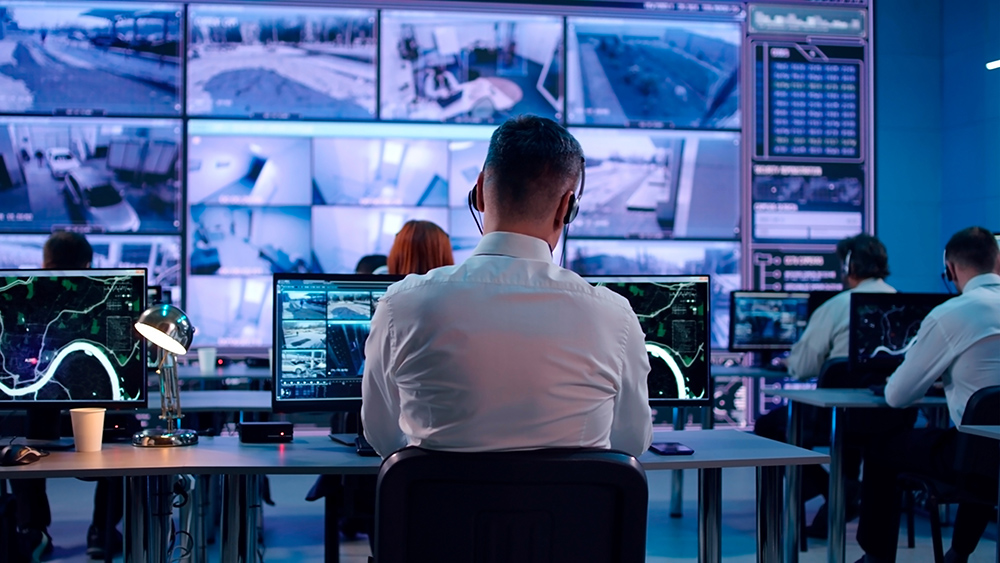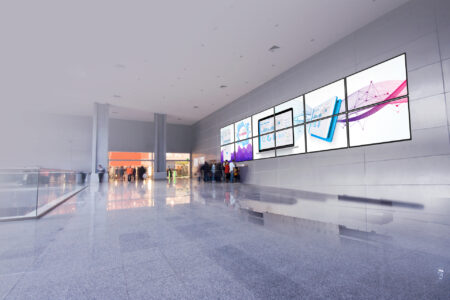10 Key Questions Integrators Should be Asking Customers
July 25, 2025
Specifying AVoIP Systems:

The use of AV over IP (AVoIP) on 1Gb networks and 10Gb Software Defined Video over Ethernet (SDVoE) networks are gaining substantial traction as means of signal distribution across a broad range of industries and applications. This is due to their high performance, near zero latency, scalability and flexibility – chief among many other attributes.
However, once integrators and their customers decide on specifying these technologies, there are a number of considerations to ensure that proposed systems will live up to all parties’ expectations and real-life use.
In this article, Travis Cawthorne, Director of Products & Training, Kramer, provides some of the key questions integrators should be asking their clients as they prepare to design and deploy AV systems.
1. What are the operational and business impacts of potential system disruptions?
Understanding the criticality of the AVoIP application is the foundational step in the specification process. The implications of system failure vary dramatically depending on the context, directly influencing the necessary levels of performance, reliability and redundancy.
Mission critical applications, such as command center surveillance and medical imaging rely on AVoIP to deliver flawless operation. These environments demand near zero latency to facilitate real-time decision-making and accurate color representation for precise visual interpretation. Any disruption can have severe consequences, potentially jeopardizing lives, safety protocols, security or operational effectiveness. In these scenarios, the cost of failure far outweighs the investment in robust, redundant systems. Integrators must understand the specific operational workflows to design resilient architectures to make sure there are no performance disruptions that may put lives and property at risk.
Conversely, in non-mission-critical applications, such as digital signage networks, corporate lobbies or entertainment venues, the impacts of system disruptions, while still undesirable, are typically less severe.
2. What are the bandwidth and performance needs of your video and audio?
Like so many of the options integrators and their customers will need to address, bandwidth and performance demands fully depend on the intended application. Simple distribution of TV signals or signage to screens in a restaurant or college campus may be well handled by a 1Gb network.
However, for applications requiring high bandwidth and minimal latency, such as uncompressed 4K video in live event productions or interactive training simulations, a 10Gb infrastructure is typically essential to ensure smooth, high-quality performance.
Understanding the specific content and performance requirements of each application will determine the necessary network infrastructure.
3. Is it necessary, or preferred, to create a dedicated AV network?
It is not always necessary to create a dedicated AV network for an AVoIP system. However, it is recommended in scenarios where network security is critical and where the customer does not want their AV and IT operations bumping into each other.
4. What are the anticipated future growth and scalability requirements?
Regardless of uncertainty about this during the design phase, the reality is that successful system installations may very well need (or want) to expand in the future. AVoIP and SDVoE solutions help future-proof a client’s investment.
Both can easily scale to the number of inputs and outputs needed without requiring extensive and costly replacements of hardware such as in legacy type matrix switches.
5. Will the AVoIP system need to manage video walls or multiview displays?
Not all AVoIP and SDVoE solutions are created equal. It is important to explore the capabilities of the encoders and decoders, as well as their management and control systems, to make sure they not only have these capabilities, but that the customer is comfortable with how they work.
6. Does your client have a preference for how they will operate and manage their AVoIP system?
Understanding the user experience is paramount. Consider the different user profiles (e.g., end-users vs. AV professional) and their comfort levels with technology. Will they rely on touch panels, mobile devices, dedicated control systems or a centralized management platform? Ease of use, accessibility and the frequency of adjustments will dictate the most suitable control solution.
7. What is the preferred approach for sourcing AVoIP components: a single vendor for streamlined integration or best-of-breed products from various manufacturers?
This decision involves weighing the convenience and potentially simplified support of a single-vendor solution against the flexibility and potentially superior features or pricing offered by selecting components from different manufacturers.
8. Is Trade Agreements Act (TAA) compliance a requirement for this project?
If the customer is a government agency, the answer is decidedly yes. However, there may be other customers who are intent on having products made in the U.S. or a designated country for security concerns or simply by preference. This is obviously very important to find out in the early stages of specifying a system.
9. What are the maximum distances required for signal transmission in this AVoIP system?
Transmission distance is a key factor in determining the appropriate cabling infrastructure. For runs up to 100-meters, quality Category (Cat6/Cat6a) cables may be deployed as they are relatively inexpensive, durable and widely available. For longer distances, you will want to go with fiber cables that are more expensive but can carry higher bandwidth content further and faster with no signal-disrupting electromagnetic interference (EMI).
10. What is the full slate of technologies and features that will need to be integrated with the AVoIP system?
You need to consider all third-party technologies, such as Dante or AES67 audio, as well as peripheral components, including USB cameras, when specifying an AVoIP system to ensure each is compatible and will work well together. You’ll also want to verify that any custom inputs/displays/ resolutions, such as 21:9 ratio or 32:9 ratio ultrawide, are factored into the system design.
By asking these seemingly simple questions upfront, you and your client will be in a better position to explore their vision and unspoken needs for their proposed system – early enough when the specs are fluid so that changes can be made to avert costly omissions, installation headaches, cost overruns and system limitations. Happy designing!






